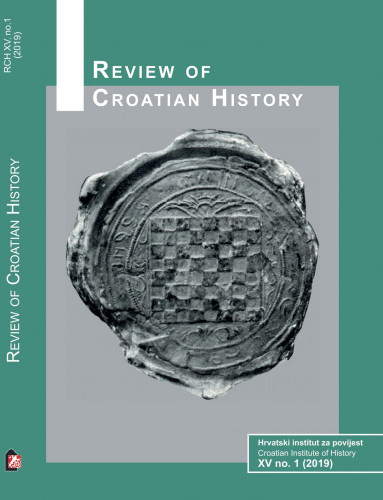The synchronic linguistic situation of the urban idiom in the city of Zadar is a result of several strands of dialectal influence: Neo-Shtokavian dialect spoken in the hinterland, Chakavian ikavian (“ikavski”) idiom spoken in the coastal region of Croatia, Central Chakavian ikavian-ekavian (“ikavski-ekavski”) dialect and standard Croatian. Lisac established that the contemporary Zadar idiom consists of a mixture of two Croatian dialects, Chakavian and Shtokavian, each in turn further subdivided into Central Chakavian and South Chakavian, Bosnian-Herzegovinian and East Herzegovinian, respectively. Due to varied historical circumstances, within these dialects we find a number of loanwords, mostly Turkish in Shtokavian and Romance borrowings in the Chakavian dialect. To this end the paper uses linguistic contact theory, applied in research on dialects, and explores influence in one direction only: it explores the presence of Turkish loanwords in Croatian idiom of Zadar (in its Shtokavian dialectal component) and Romance loanwords in the Zadar idiom (in its Chakavian component) but not the influence of Croatian on either Turkish or Romance languages. Hence the recipient language is Croatian (here specifically its Zadar idiom) while the donor languages are Turkish and Romance languages, mainly Venetian Italian but also standard Italian, and in some cases we are dealing with linguistic relics of Romance Dalmatian language in Croatian. We have selected to analyse Turkish loanwords in the Shtokavian dialect and Romance loanwords in the Chakavian dialect (within the Zadar idiom) because they are the most frequent foreign borrowings in the Zadar idiom, especially Romance elements that pervade the varieties of Croatian spoken in the coastal region (they often remain on a regional level only but some have passed from Chakavian into Croatian standard).; Die synchronische Sprachsituation des städtischen Idioms in Zadar ist das Ergebnis einer Reihe von dialektalen Einflüssen: der neo-štokawische Dialekt, der im Hinterland gesprochen wird, das čakawisch-ikawische Idiom, das in der Küstenregion Kroatiens gesprochen wird, das mittelčakawische ikawis-ch-ekawische Idiom und die kroatische Standardsprache. Der Sprachforsc-her Lisac hat festgestellt, dass das zeitgenössische Idiom der Stadt Zadar eine Mischung zweier kroatischer Dialekte, nämlich des čakawischen und des što-kavischen, sei. Der čakawische Dialekt sei darüberhinaus in den mittel- und südčakawischen und der štokawische in den bosnisch-herzegowinischen und ost-herzegowinischen einzuteilen. Infolge unterschiedlicher historischer Umstände haben sich zahlreich Lehnwörter in diese Dialekte eingeschlichen. Im štokawischen Dialekt han-delt es sich zumeist um türkische und im čakawischen um romanische Leh-nwörter. Diese Arbeit verwendet die Theorie von Sprachkontakten, die man auf die Forschung von Dialekten anwendet und die den Einfluss nur in jewe-ils einer Richtung untersucht: das Vorhandensein türkischer Lehnwörter (in seiner štokawischen dialektalen Komponente) und romanischer Lehnwörter (in seiner čakawischen Komponente) im Idiom der Stadt Zadar, aber nicht den Einfluss der kroatischen auf die türkische oder romanische Sprache. Da-her ist das Kroatische die Empfangssprache (hier konkret das Idiom in Zadar) und die Gebersprachen sind jeweils das Türkische und das Romanische, zume-ist das venezianische Italienisch bzw. die italienische Standardsprache. In eini-gen Fällen werden die sprachlichen Überreste der romanischen dalmatischen Sprache im Kroatischen untersucht. Zur Analyse wurden türkische Lehnwör-ter im štokawischen Dialekt und romanische Lehnwörter im čakawischen Dia-lekt (innerhalb des Zadarer Idioms) ausgewählt.
Sažetak

 Review of Croatian history : Revue für kroatische Geschichte = Revue d'histoire croate : 15,1(2019) / editor-in-chief, Chefredakteur Mario Jareb.
Review of Croatian history : Revue für kroatische Geschichte = Revue d'histoire croate : 15,1(2019) / editor-in-chief, Chefredakteur Mario Jareb.